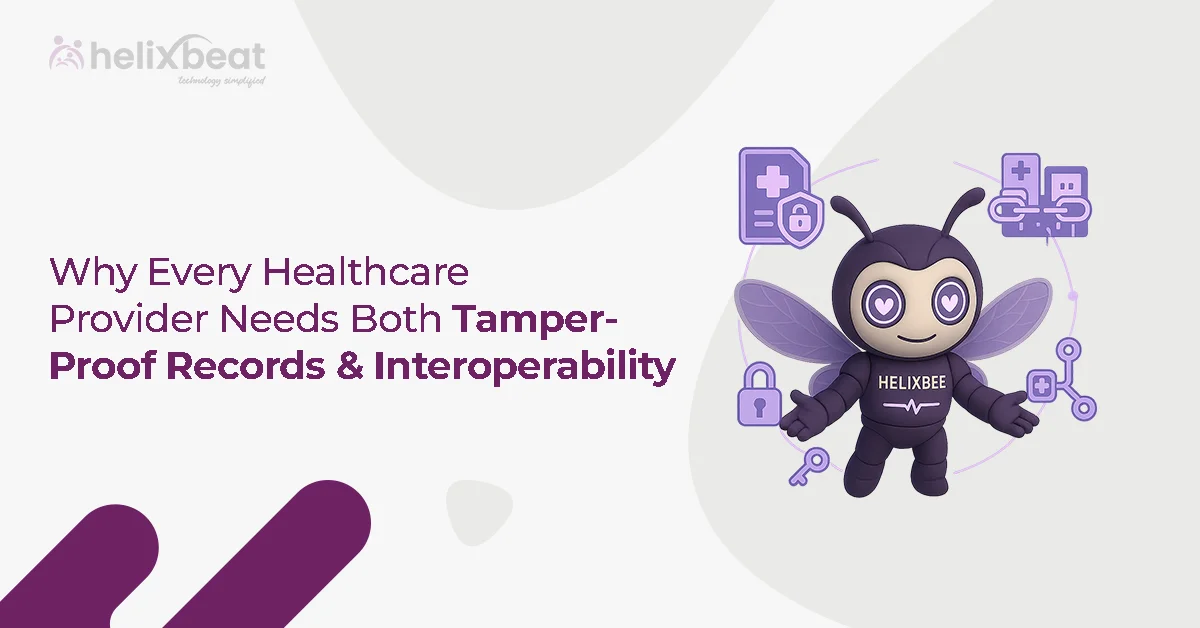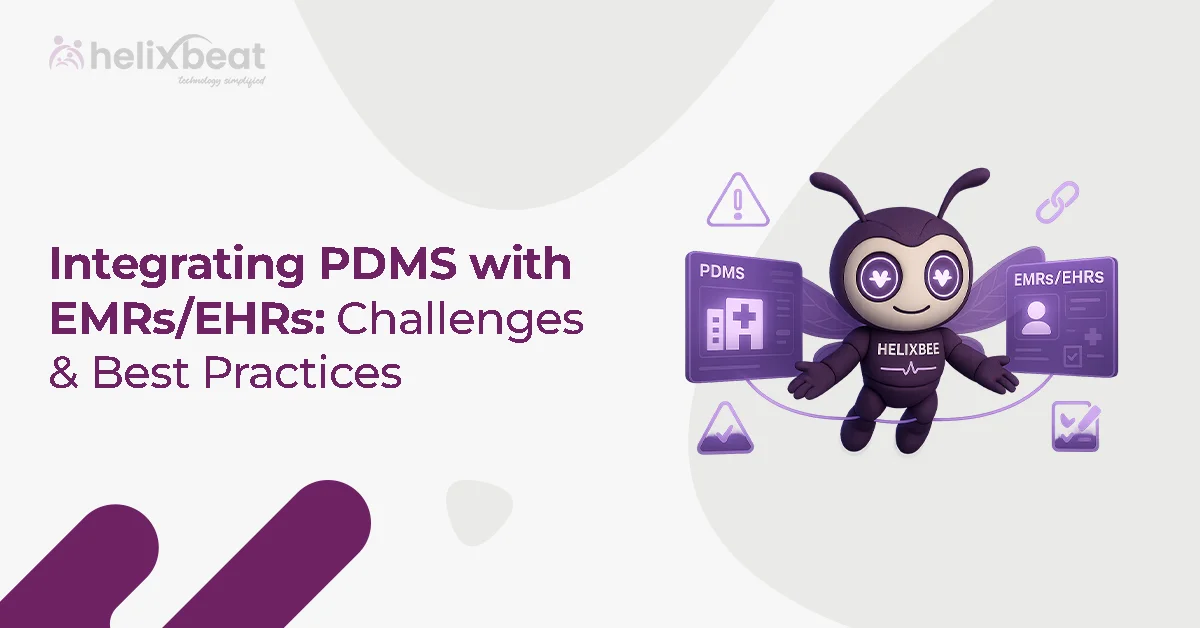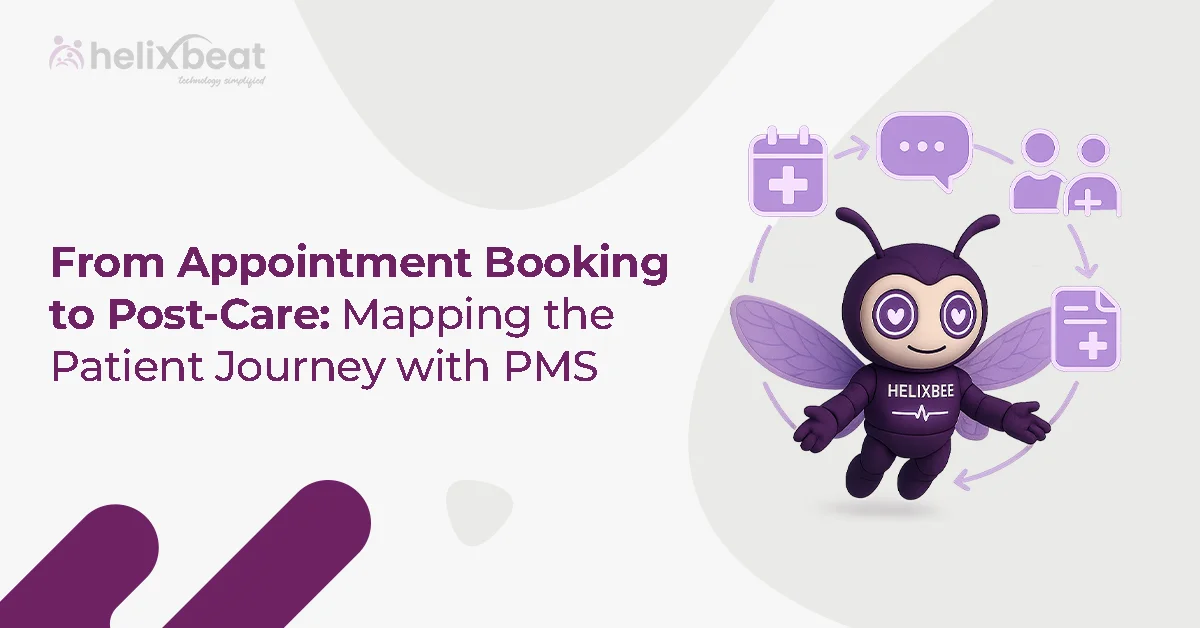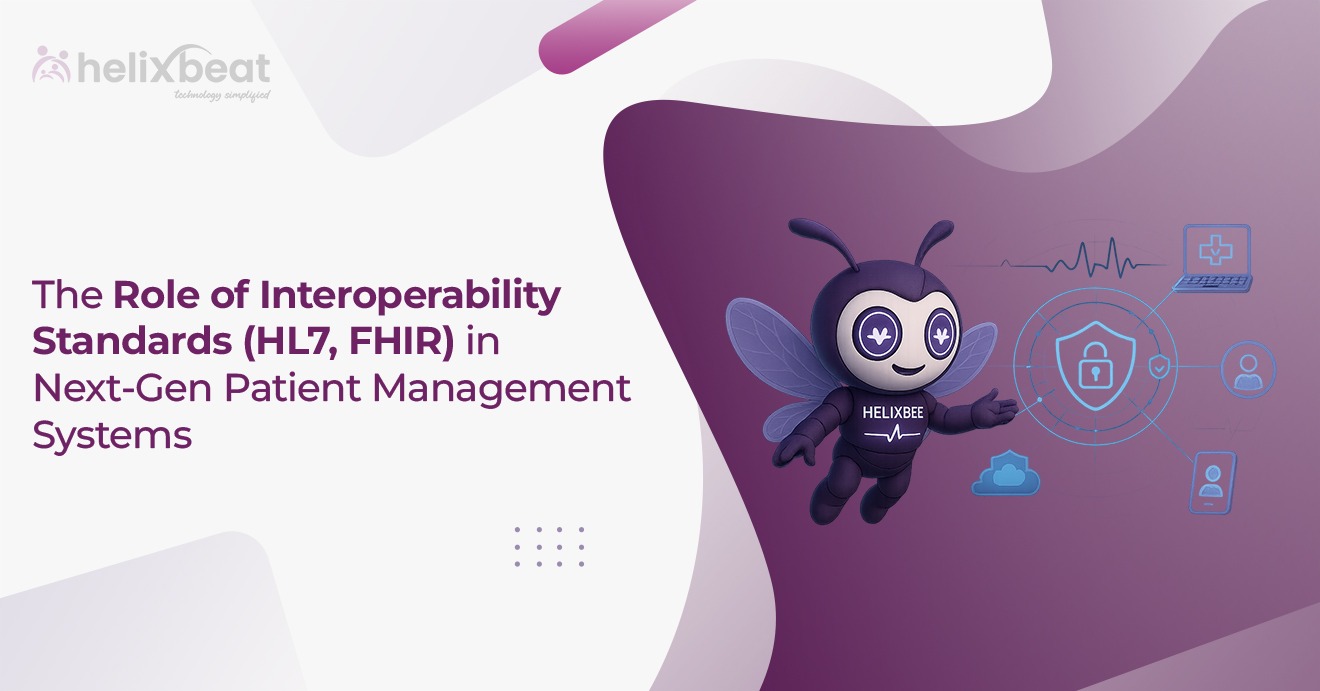Electronic health records (EHRs) are the backbone of modern healthcare, centralizing patient data for accurate diagnosis, treatment planning, and care coordination. However, simply having digital records is not enough; these records must be both tamper-proof and interoperable. Tamper-proof records ensure data integrity and patient safety, while interoperability allows seamless data exchange across departments, facilities, and healthcare systems.
With the increasing number of data breaches and fragmented patient information, integrating secure and interoperable electronic health record management is crucial. Healthcare providers who fail to adopt these solutions risk inefficiencies, errors, and compromised patient trust.

Table of Contents
Understanding Electronic Health Records and Their Role in Healthcare
Electronic health records consolidate patient information, including demographics, medical history, lab results, and treatment plans, into a centralized digital platform. A robust electronic patient record system allows healthcare professionals to:
- Access patient data in real-time across multiple care settings
- Make informed clinical decisions using comprehensive, accurate records.
- Reduce administrative overhead and eliminate redundant processes.
Integrating EHRs with other patient data solutions ensures continuity of care and improves patient satisfaction.
Why Tamper-Proof Records are Essential for Patient Safety
Tamper-proof records are crucial for maintaining the accuracy and integrity of patient data, preventing unauthorized alterations that could compromise patient safety. When healthcare providers rely on digital patient records, ensuring that this information is secure, unchangeable, and accurate is essential for making informed clinical decisions and delivering safe care. Tamper-proof systems help protect against errors, fraud, and malicious activity that can lead to misdiagnosis, improper treatments, or medication errors.
The Significance of Interoperability in Healthcare
Interoperability allows different healthcare systems to share, read, and use patient data seamlessly. Its importance lies in improving care coordination, reducing duplication, and enabling data-driven decisions.
- Types of Interoperability
- Technical Interoperability: The ability of systems to exchange data via standardized protocols (e.g., HL7, FHIR)
- Semantic Interoperability: Ensures the meaning of the data is preserved across systems for consistent interpretation
- Data Standards and Formats
- Standardized formats, such as HL7, FHIR, and CDA, help maintain uniformity in healthcare data.
- Enables seamless integration between electronic health record management systems
- Barriers to EHR Interoperability
- Proprietary systems with incompatible formats
- Data silos and fragmented databases
- Lack of standard adoption across healthcare providers
Benefits of Combining Tamper-Proof Records with Interoperable EHRs
The combination of data integrity and seamless data exchange offers numerous benefits for both healthcare providers and patients. Here’s a deeper look at the key advantages:
1. Comprehensive Patient View
By ensuring that patient records are both secure and interoperable, clinicians can access a complete, accurate, and up-to-date view of a patient’s health history. This holistic view enables more informed decision-making, thereby reducing the risk of overlooking critical information. With data from various healthcare providers consolidated into a unified platform, clinicians can track medical histories, lab results, medications, and treatment plans in one location, leading to more accurate diagnoses and personalized treatment.
2. Reduced Errors and Redundancies
Tamper-proof EHRs significantly reduce the risk of errors, such as incorrect prescriptions, missed test results, or redundant medical procedures. By eliminating discrepancies in patient data, the chance of duplication in testing and treatment is minimized. Additionally, interoperable EHRs ensure that all involved healthcare providers are working from the same accurate dataset, preventing confusion and miscommunication that often leads to errors.
3. Faster Decision-Making
With real-time access to verified patient data, healthcare providers can make faster, more accurate decisions. In emergencies, immediate access to a patient’s medical history, medications, allergies, and prior treatments can be life-saving. By combining tamper-proof records with interoperability, clinicians can confidently act on the most up-to-date information available, thereby reducing delays and enhancing the timeliness of care delivery.
4. Improved Care Coordination
One of the most significant advantages of interoperable EHRs is the seamless sharing of data between different healthcare providers, departments, and even across different organizations. This integrated approach ensures that everyone involved in a patient’s care is on the same page. Whether it’s a specialist, a primary care physician, or a hospital, interoperability promotes better care coordination, leading to more comprehensive and holistic treatment plans. Ultimately, it enhances patient outcomes by enabling a more collaborative approach to healthcare delivery.
5. Compliance and Auditability
Ensuring that patient data is tamper-proof and interoperable not only secures sensitive information but also helps healthcare providers stay compliant with industry regulations such as HIPAA and GDPR. Tamper-proof logs and standardized data formats enable thorough audits, ensuring transparency and accountability in patient care. These measures safeguard data privacy while providing healthcare organizations with the necessary tools to meet legal and regulatory standards.
Best Practices for Implementing Secure and Interoperable EHRs
To achieve both tamper-proof and interoperable records, healthcare providers should:
- Adopt standardized protocols (HL7, FHIR) for data exchange
- Implement encryption and role-based access controls for security.
- Perform regular audits and data validation checks.
- Train staff on interoperability workflows and data management practices
- Use scalable patient data management software like PULSE for unified management
HelixBeat PULSE: Unlocking Secure and Interoperable Patient Data Management
PULSE provides a secure and interoperable electronic patient record management system that simplifies data management:
- Tamper-Proof Records: Ensures integrity with encrypted, immutable logs
- Seamless Interoperability: Supports HL7 and FHIR for smooth data exchange
- Compliance-Ready: Meets HIPAA, GDPR, and other regulatory standards
- Real-Time Analytics: Provides insights for operational efficiency and patient care optimization
Looking Ahead
For healthcare providers, the dual challenge of ensuring tamper-proof records while achieving interoperability is critical to delivering high-quality care. Without secure and interoperable electronic health records, patient data can remain fragmented, inaccessible, or prone to errors, leading to delayed diagnoses, duplicated tests, and compromised patient safety.
The solution lies in adopting robust patient data management software, such as HelixBeat PULSE, which directly addresses these challenges. By providing tamper-proof, encrypted records, PULSE ensures data integrity and protects against unauthorized access. Simultaneously, its interoperability features enable seamless data exchange between departments, facilities, and even different healthcare systems, thereby eliminating silos and ensuring that providers always have access to the most up-to-date information.
FAQs
- What are electronic health records (EHRs)?
EHRs are digital versions of patient charts that consolidate medical history, test results, and treatment plans for healthcare providers.
- Why is interoperability important in healthcare?
Interoperability ensures seamless data exchange across systems, improving care coordination, reducing errors, and enhancing patient outcomes.
- What prevents interoperability of electronic health records?
Barriers include proprietary formats, data silos, lack of standardized protocols, and legacy systems with limited compatibility.
- Which formats maintain data uniformity in healthcare?
Standards like HL7, FHIR, and CDA are used to ensure consistent, interpretable, and interoperable patient data.
- What are the two types of interoperability?
Technical interoperability (data exchange capability) and semantic interoperability (maintaining meaning across systems).
- Why are data standards important in healthcare interoperability?
Standards ensure that different systems interpret and use patient data consistently, facilitating safe and effective care.
- How does tamper-proof EHR enhance patient safety?
It prevents unauthorized modifications, ensures data integrity, and builds trust in patient information for accurate clinical decisions.
- Can PULSE integrate with multiple EMR/EHR systems?
Yes, PULSE supports seamless integration with a wide range of healthcare systems using standardized protocols.
- What is an electronic patient record system?
It’s a system that manages and stores patient data digitally, allowing healthcare providers to access and update information efficiently.
- How does PULSE ensure compliance with regulations?
PULSE uses encryption, audit trails, and secure access controls to comply with HIPAA, GDPR, and other healthcare standards.
- What is the biggest challenge in implementing EHRs?
Achieving full interoperability while maintaining secure, accurate, and complete patient data across multiple systems.
- How does PULSE help improve healthcare workflows?
By integrating tamper-proof, interoperable records, PULSE streamlines data access, reduces errors, and enhances patient engagement.














